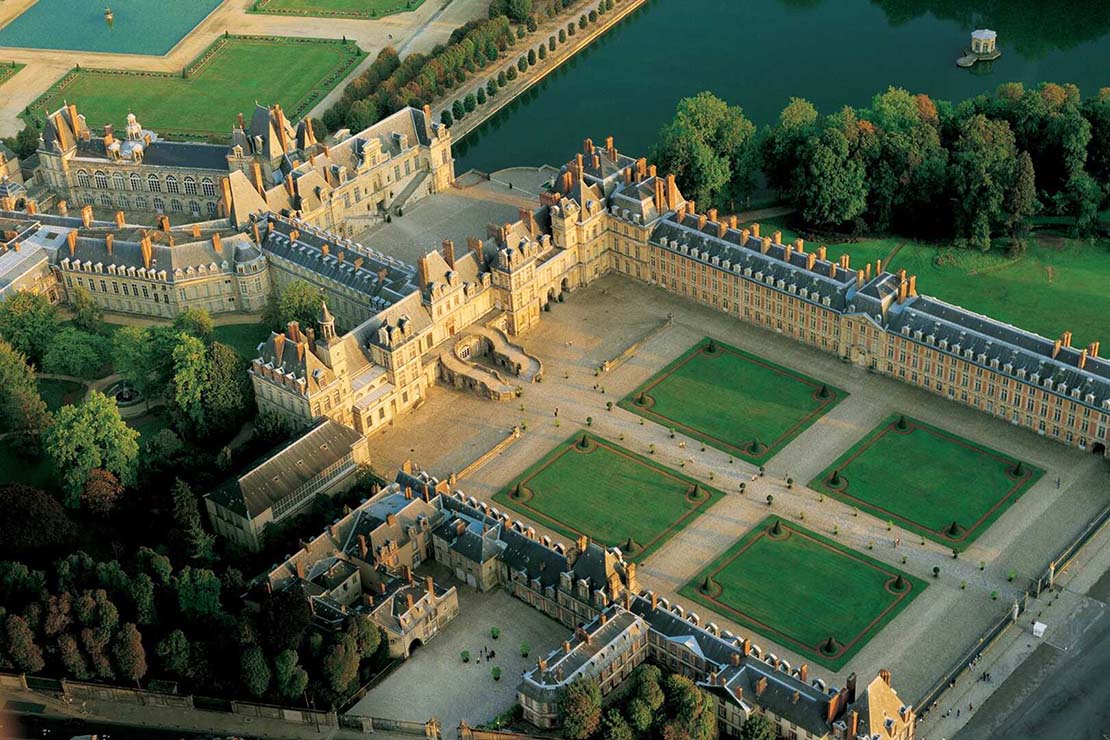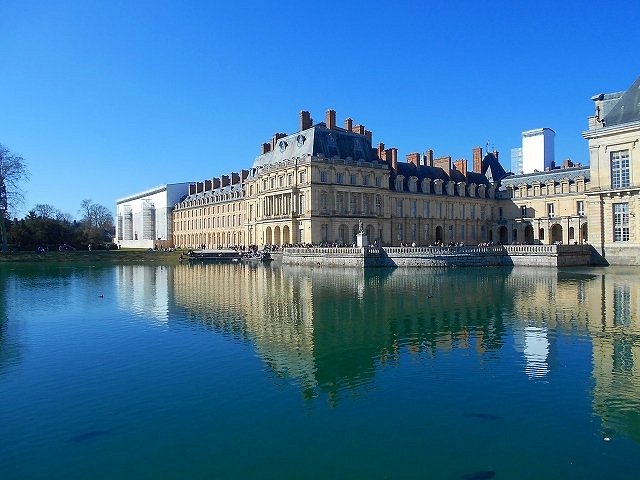Château de Fontainebleau
The Château de Fontainebleau stands as a magnificent testament to France’s rich architectural and historical heritage. Recognized for its grandeur and opulence, this castle has long symbolized royal prestige and cultural significance. Consequently, visitors can explore a place where French history has been vividly preserved, offering a glimpse into the lives of monarchs and the evolution of French art and architecture.
Can’t wait to visit the château? Book your Château de Fontainebleau tour online.
Location of Château de Fontainebleau
Situated approximately 55 kilometers southeast of Paris, Château de Fontainebleau nestles in the heart of the Île-de-France region. The castle is surrounded by the vast and picturesque Forest of Fontainebleau, which adds to its charm and allure. Thus, this strategic location made it an ideal retreat for French royalty, offering both proximity to the capital and the tranquility of the countryside.

History of Château de Fontainebleau
The origins of Château de Fontainebleau can be traced back to the 12th century. It is one of the oldest royal residences in France. Initially built as a hunting lodge for King Louis VII, it underwent significant transformations under subsequent monarchs. King Francis I, who ruled from 1515 to 1547, was particularly instrumental in its development. Inspired by the Renaissance art and architecture he encountered in Italy, Francis I embarked on an ambitious project. He aimed to expand and embellish the castle. Consequently, the result was a harmonious blend of Gothic and Renaissance styles. This set a precedent for future architectural endeavors in France.
Furthermore, the château continued to evolve under the reigns of Henry II and Catherine de Medici. They introduced Italian artists and craftsmen to further enhance its beauty. The creation of the magnificent ballroom and the stunningly frescoed Galerie François I were notable additions. These were made during this period of enhancement.
Moreover, under King Louis XIV, the château reached new heights of splendor. Extensive renovations and expansions were carried out. This included the construction of the famous Horseshoe Staircase and the expansion of the formal gardens. The château became a favored residence of the Sun King. He held court there and used it as a venue for grand entertainments and festivities.
The 18th century saw Château de Fontainebleau serving as a preferred residence for King Louis XV and Louis XVI. They continued to enhance its grandeur. However, it was during the reign of Napoleon Bonaparte that the château experienced its most significant transformation. Napoleon, recognizing its historical importance, restored the castle. He used it as a symbol of his imperial power. The château witnessed several pivotal events during his reign. This included the signing of the Treaty of Fontainebleau in 1814. This treaty marked his abdication.

Current status
Today, Château de Fontainebleau stands as a UNESCO World Heritage Site. It attracts visitors from around the globe. The château boasts meticulous preservation, allowing visitors to explore its rich history and architectural marvels. The interior houses an impressive collection of art, furniture, and decorative objects spanning several centuries. Highlights include the opulent Grand Apartments, the stunning Renaissance rooms, and the Napoleon I Museum, which displays artifacts from the Napoleonic era.
Additionally, the château’s vast grounds and gardens offer a serene escape into nature. The English Garden, the Grand Parterre, and the Diana Garden are notable examples of meticulously landscaped areas surrounding the castle. Consequently, these gardens provide a picturesque setting for leisurely strolls, picnics, and reflection.
Furthermore, Château de Fontainebleau hosts numerous events and cultural activities throughout the year, further enhancing its appeal. From classical music concerts to art exhibitions and historical reenactments, the château continues to serve as a vibrant center of cultural life.
In conclusion, Château de Fontainebleau is more than just a historical monument; it stands as a living testament to the grandeur and legacy of French royalty. By visiting this extraordinary site, you are invited to step back in time and experience the splendor and history that have shaped France.
Admission
Community features
Castle features
Video
Location
Official website
Featured listings














